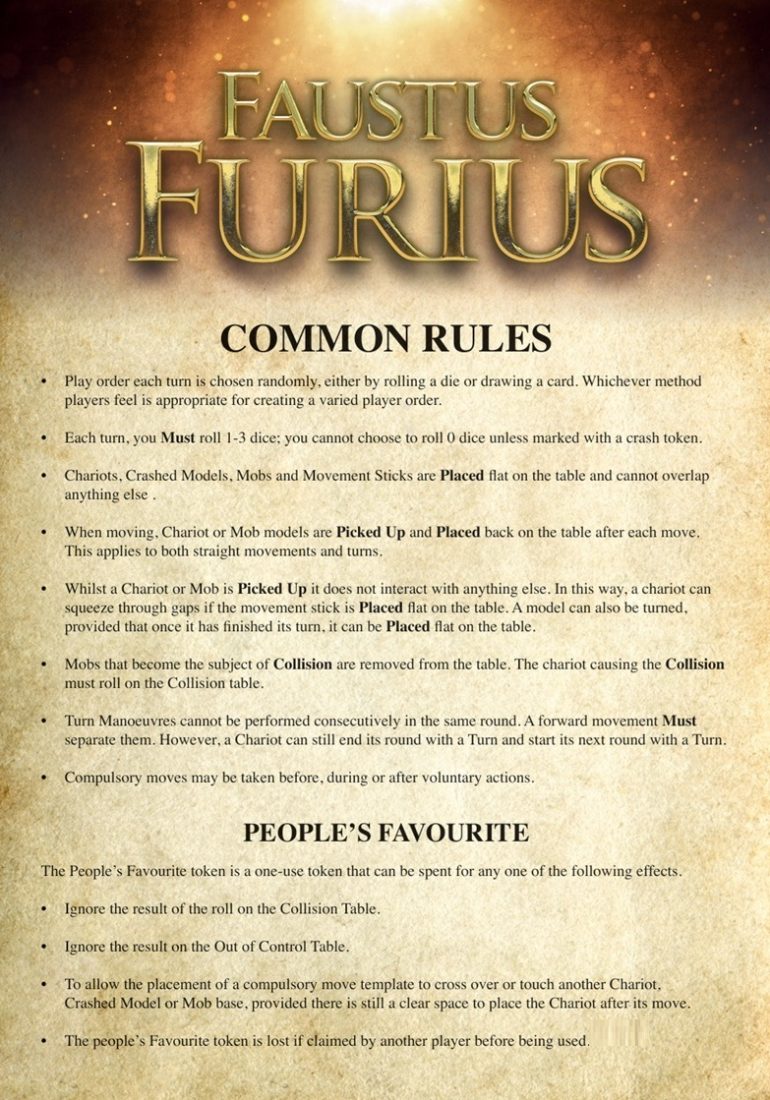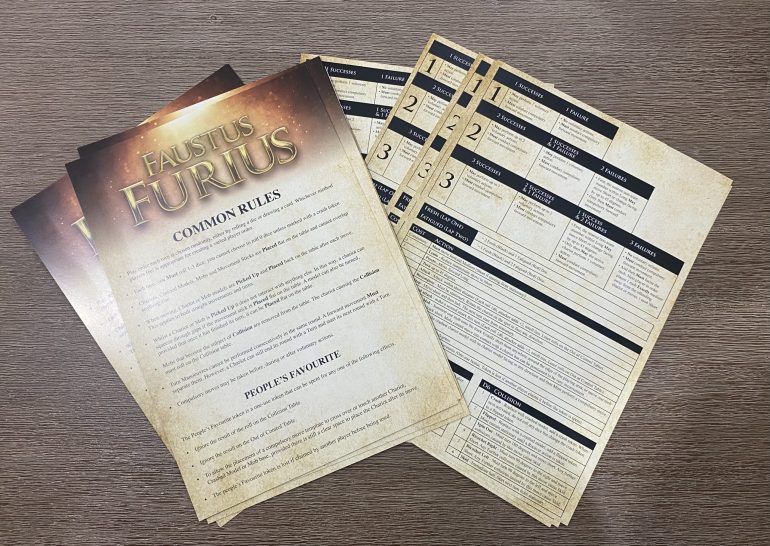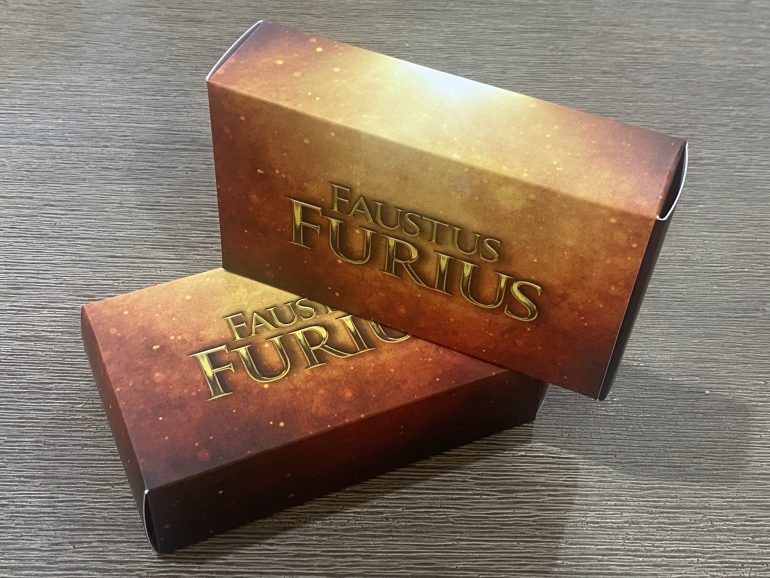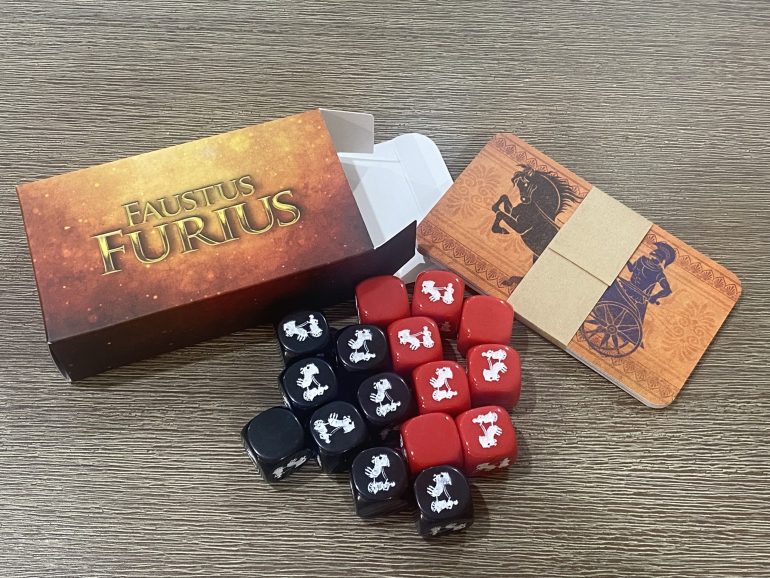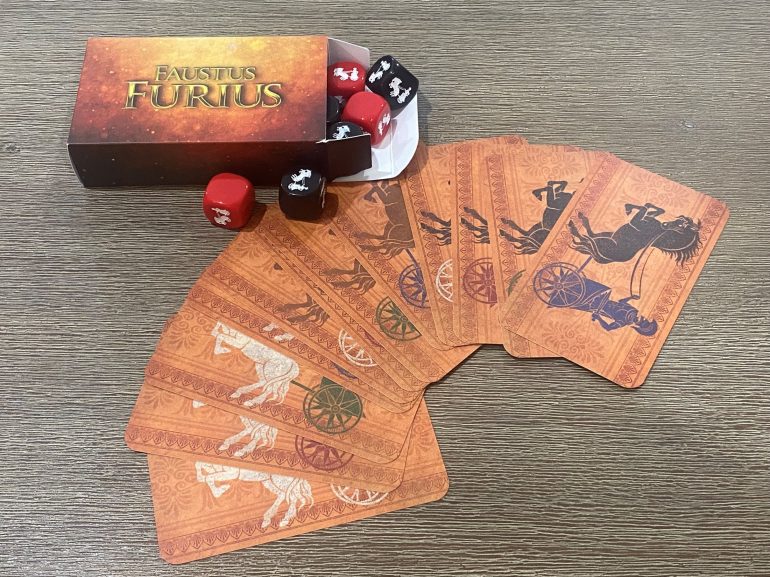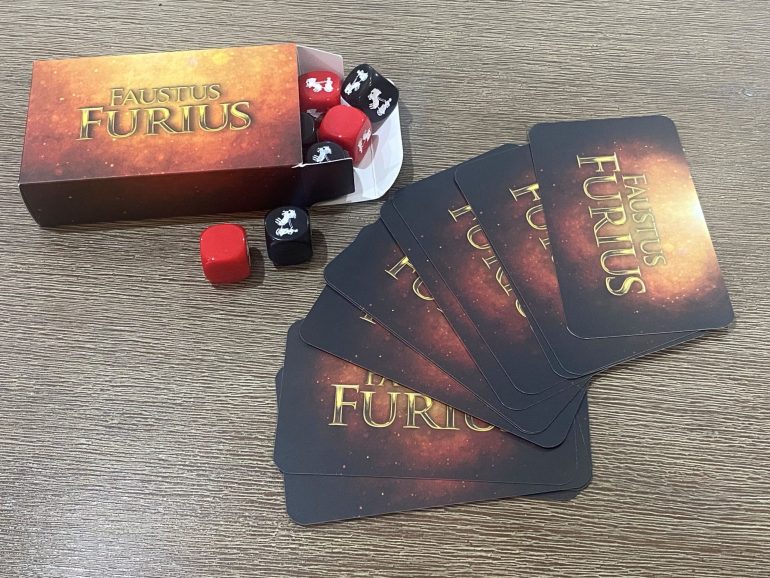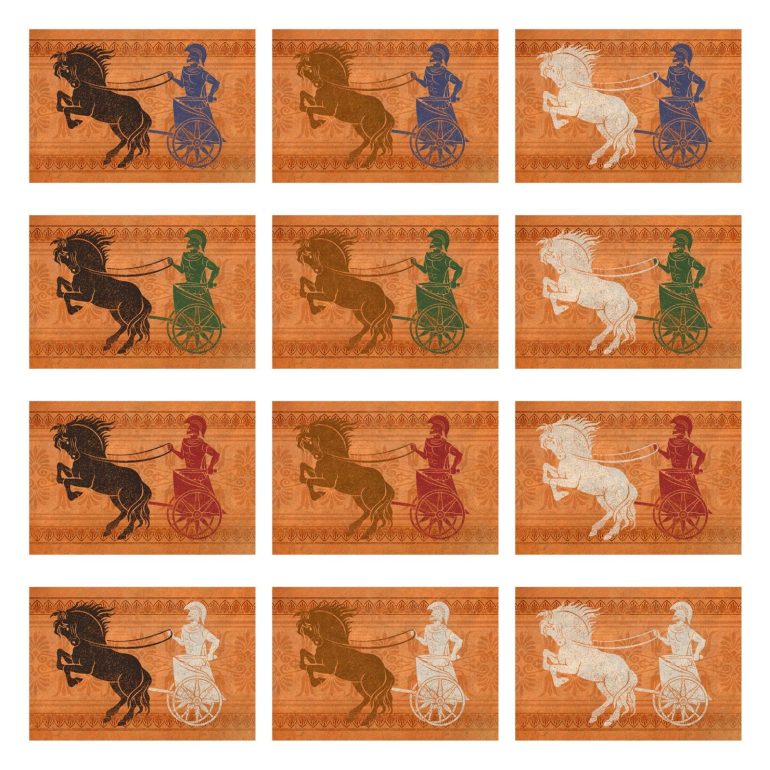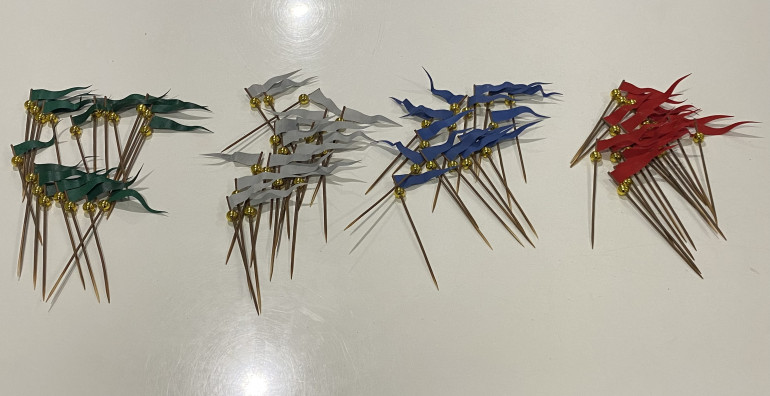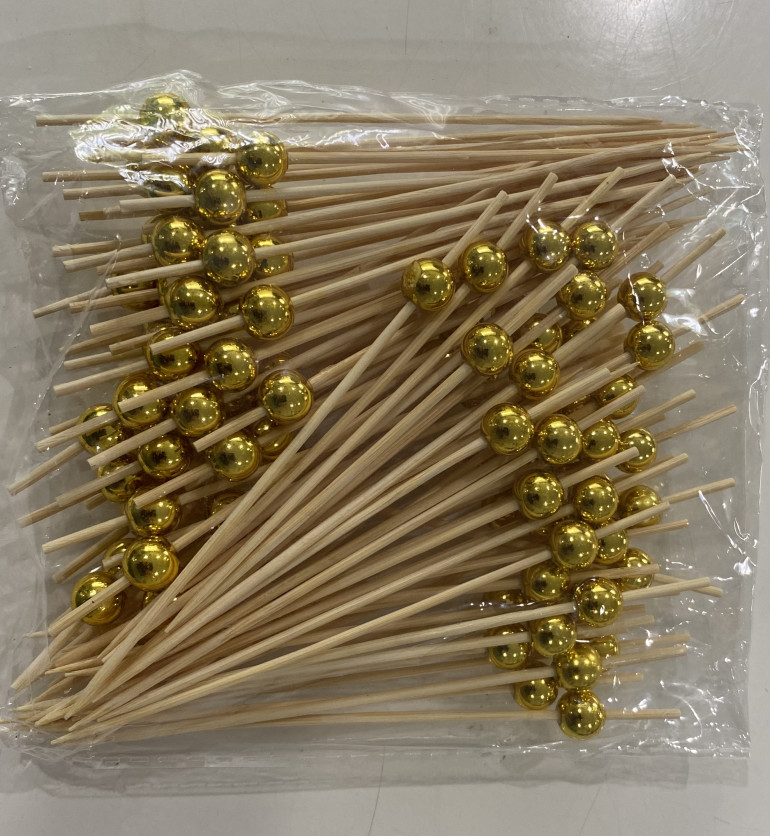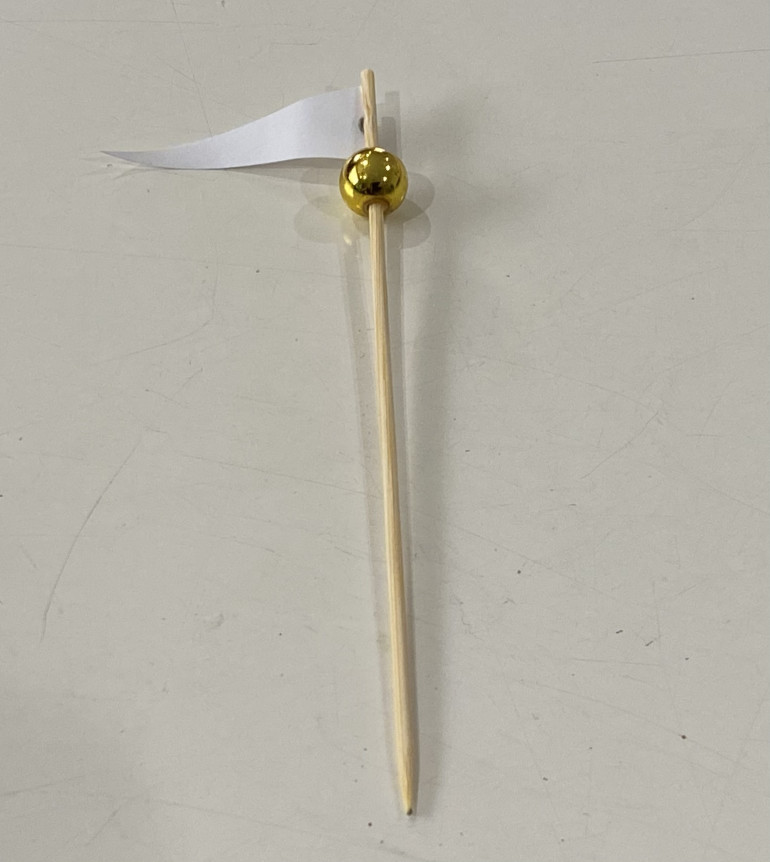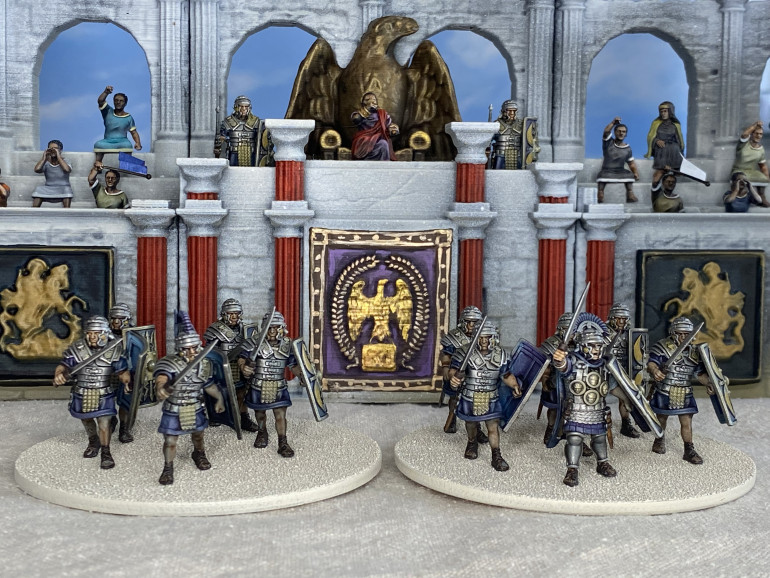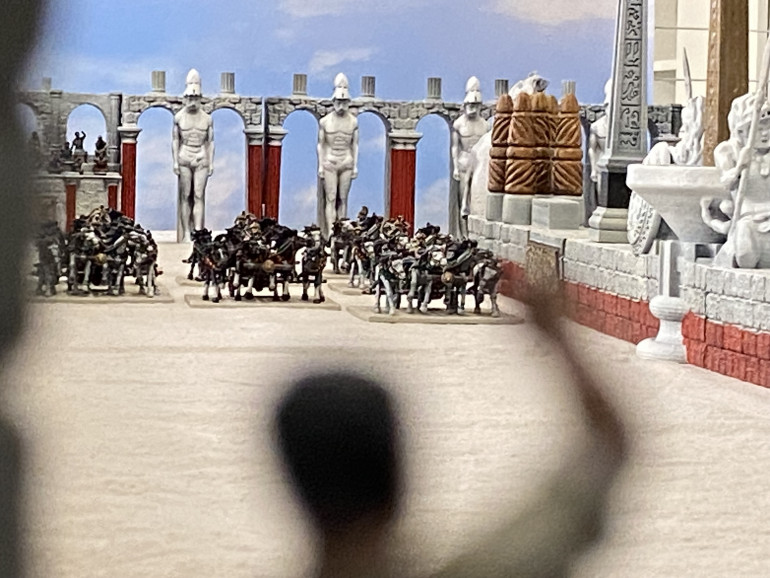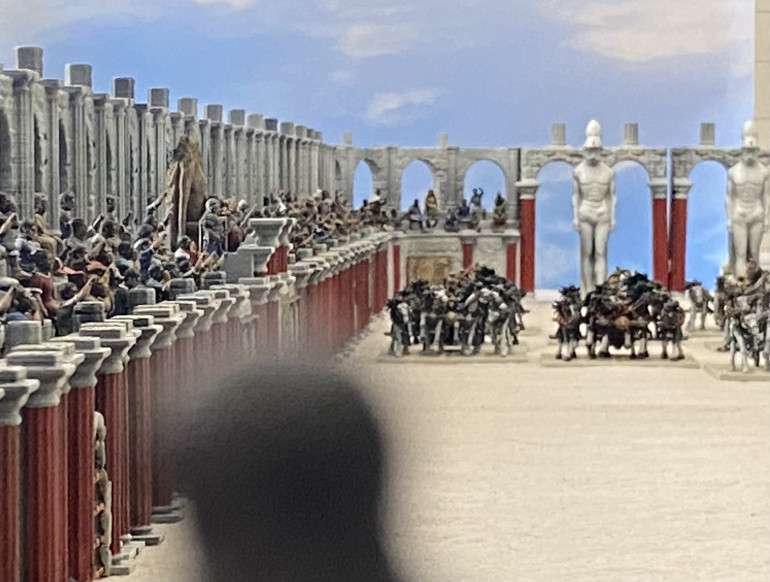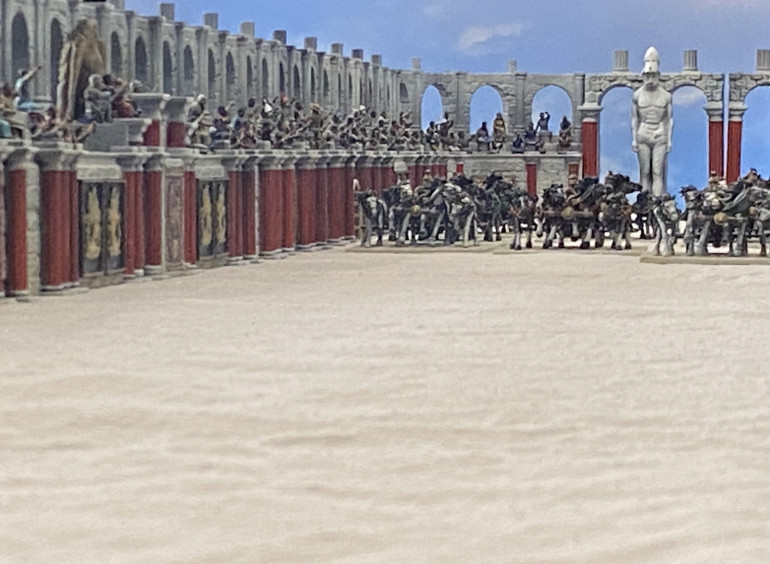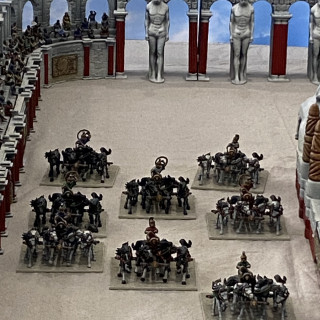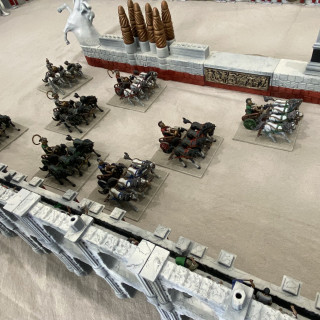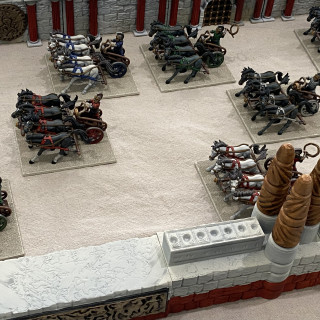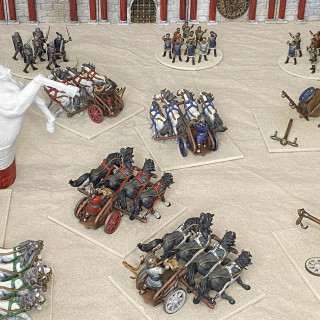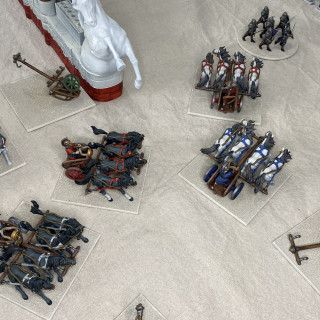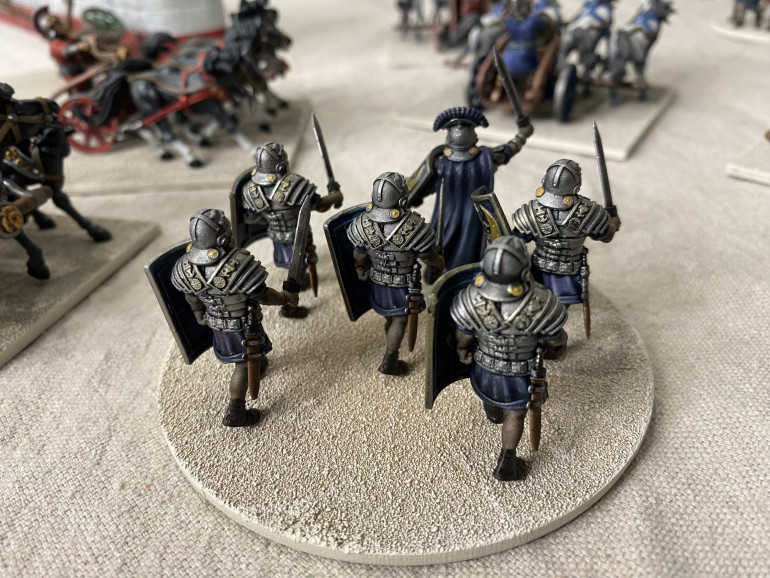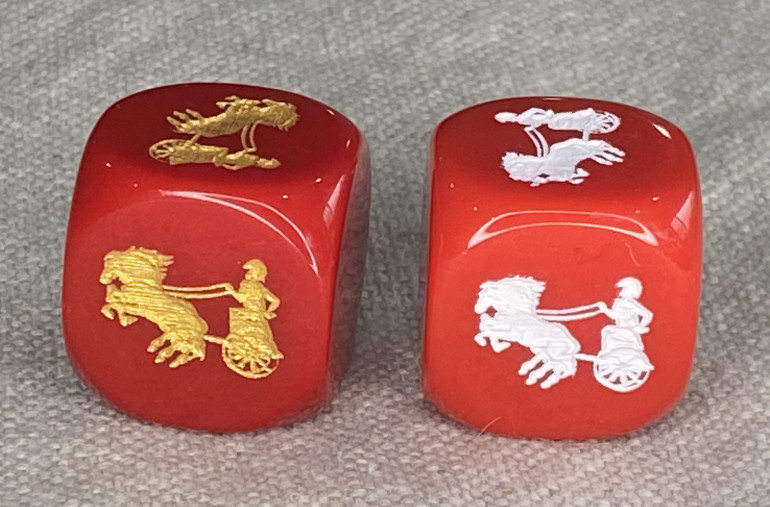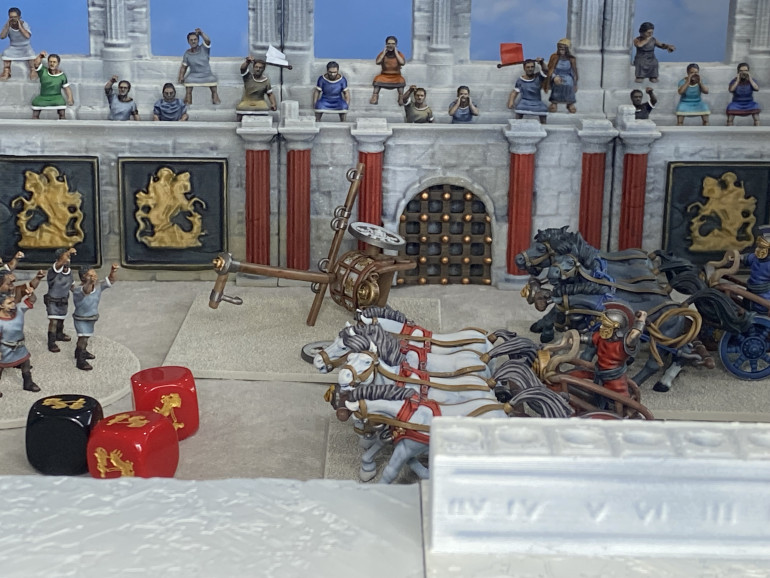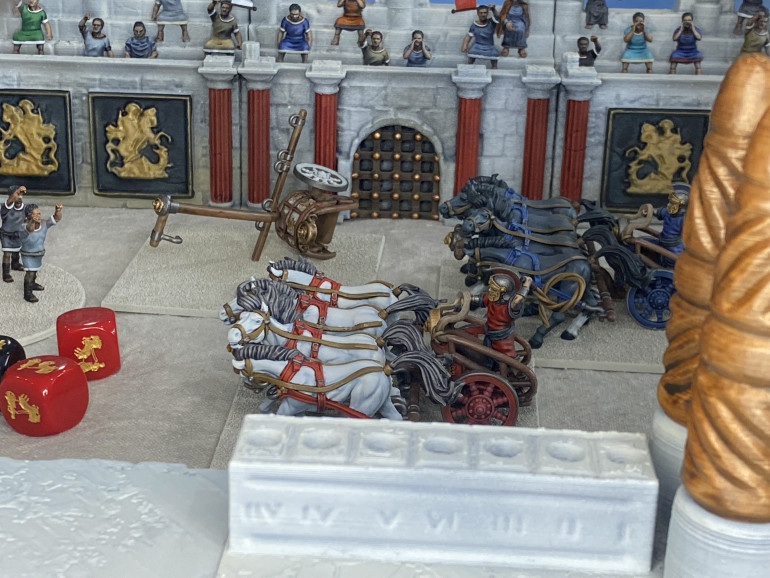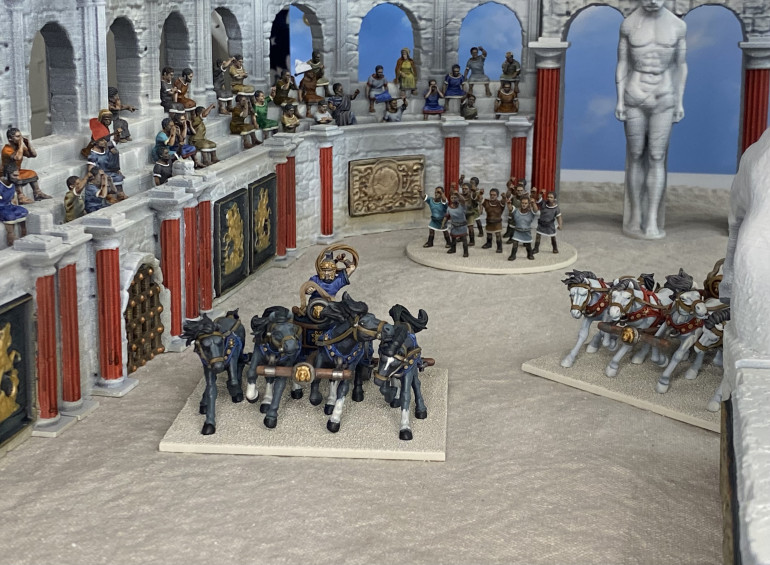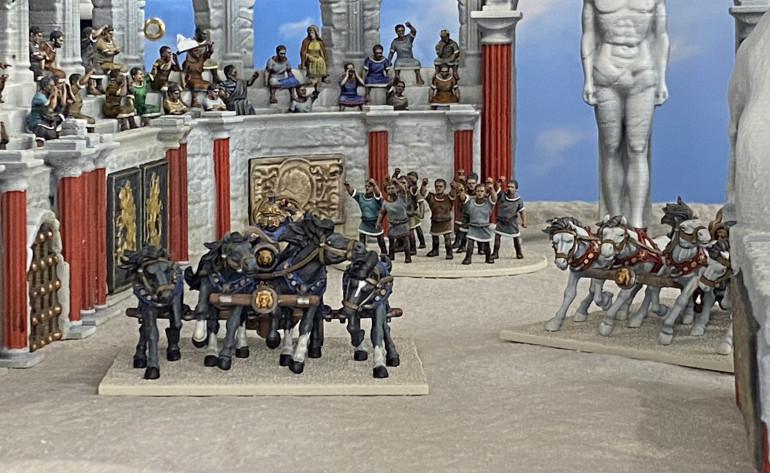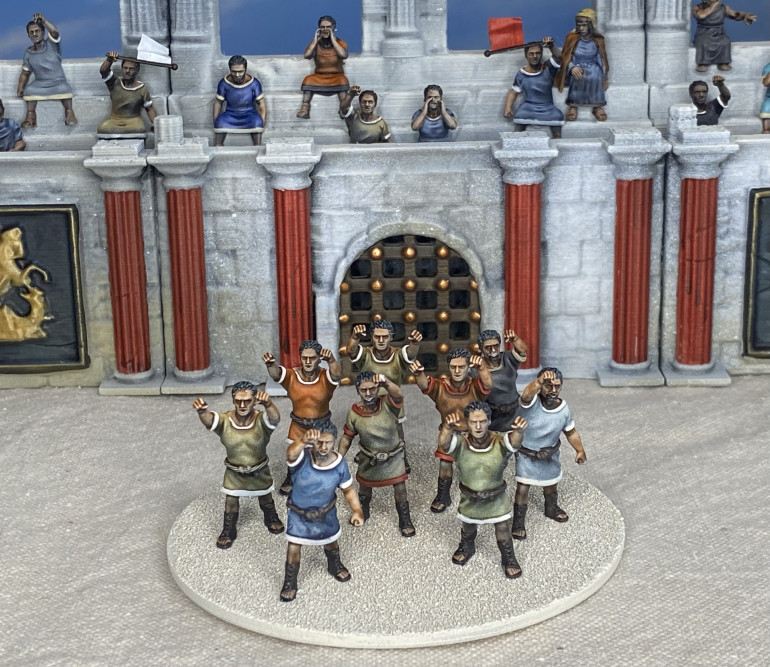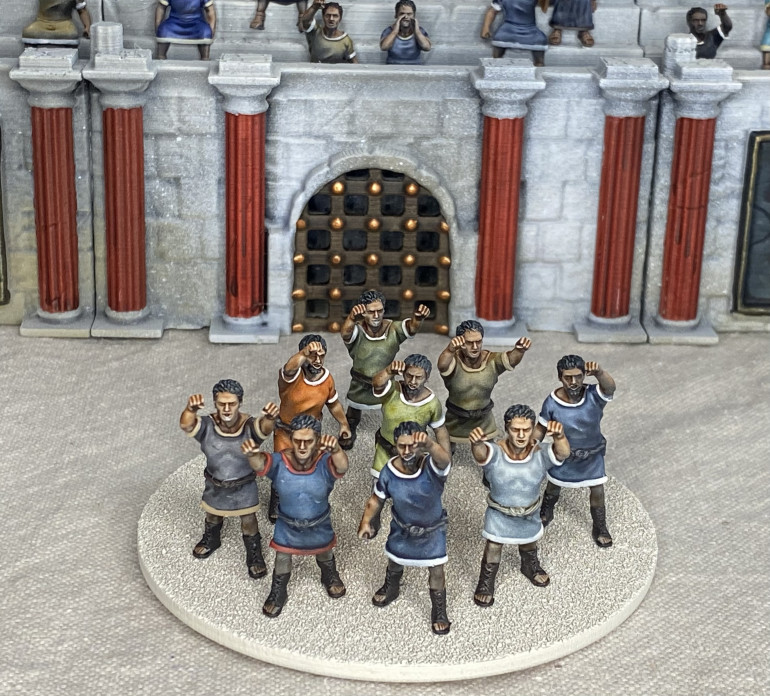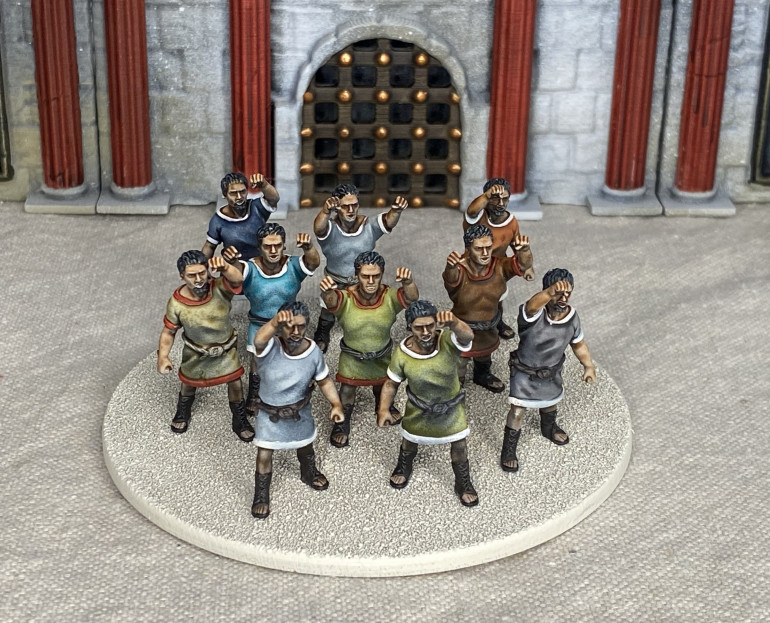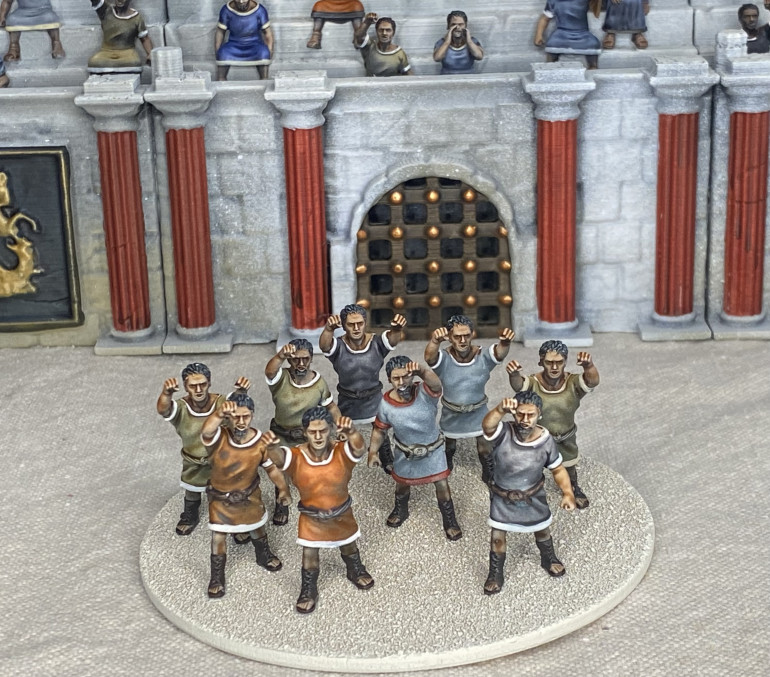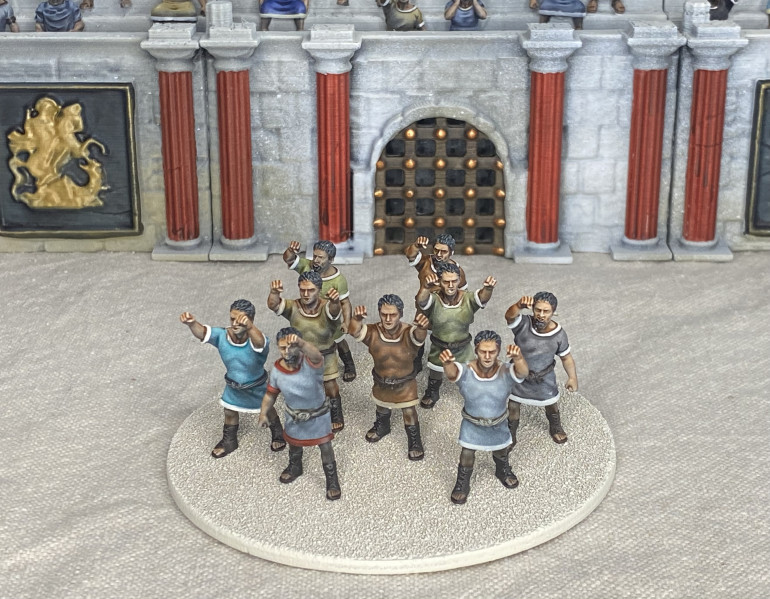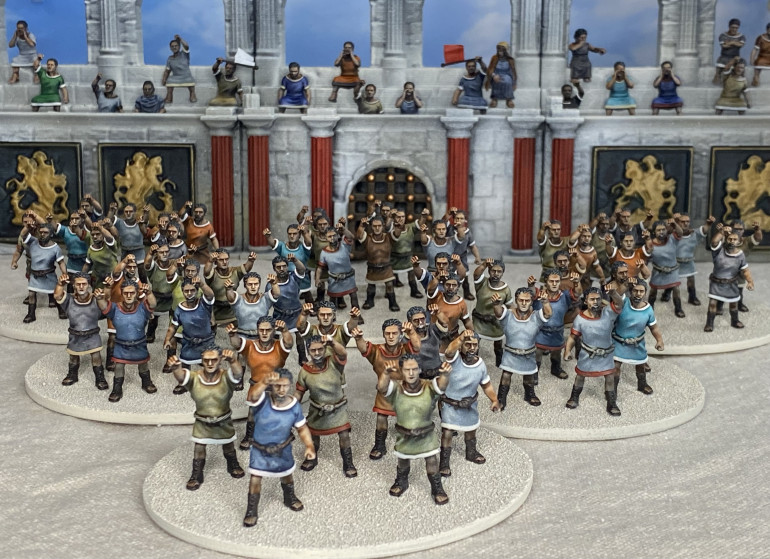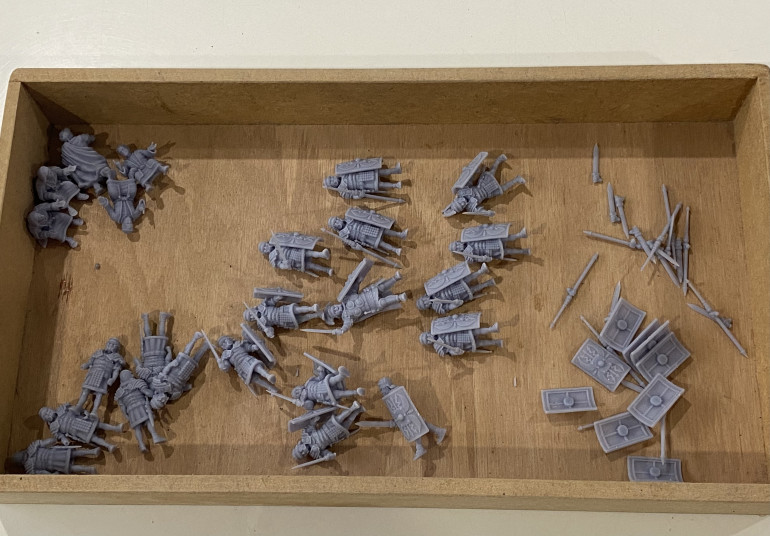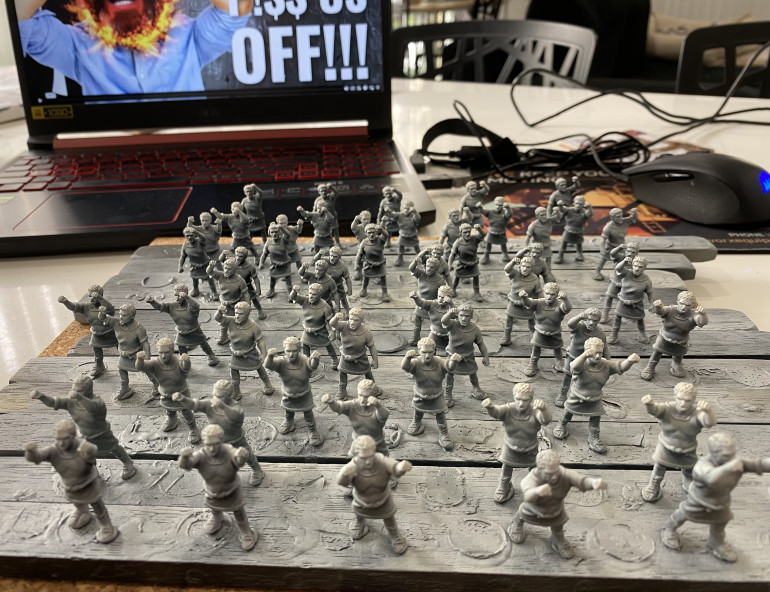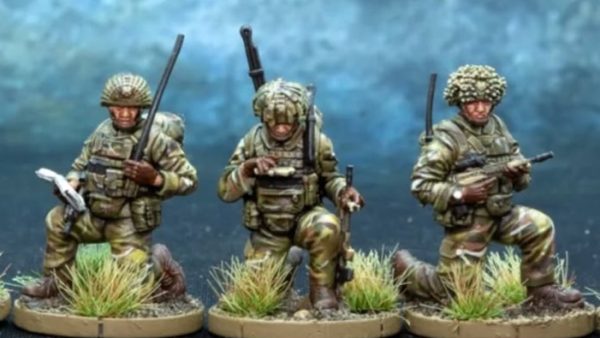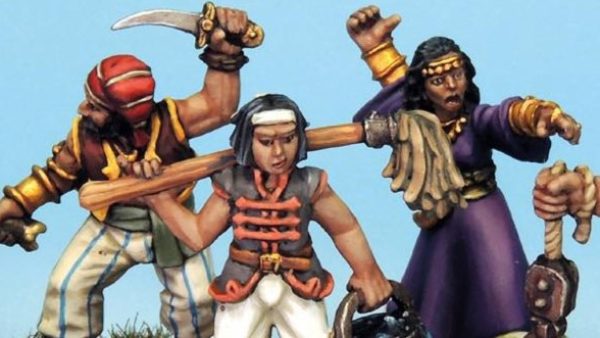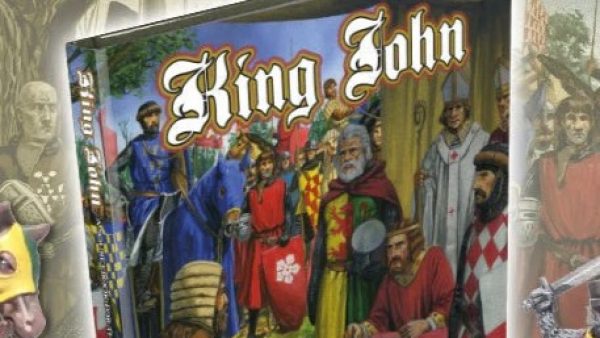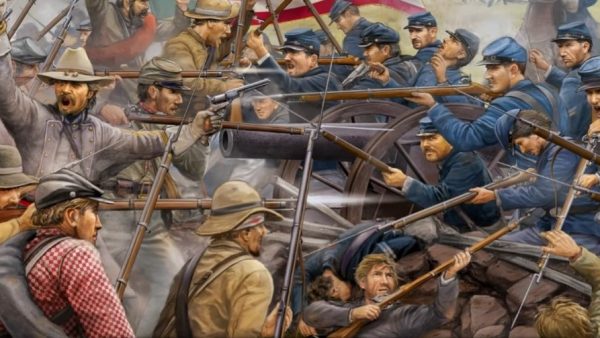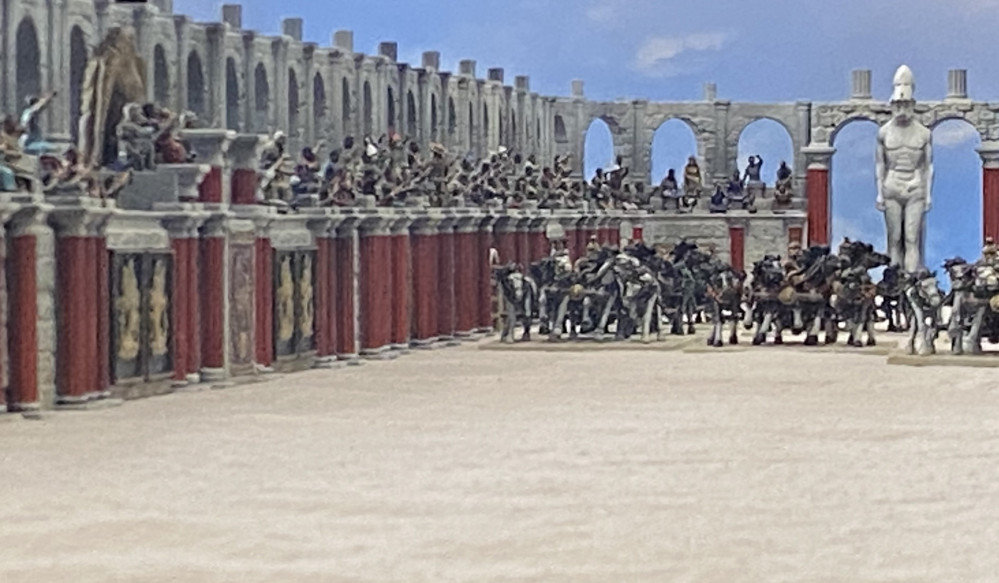
Circus Maximus
Recommendations: 843
About the Project
Faustus Furius is a fast and furious, tongue in cheek table-top game based very loosely around the chariot races of the ancient world and adaptable to any racing situation.
Related Genre: Historical
This Project is Active
The Basic Rules or Common Rules of the Game.
I now have the rules down to a single page. On one side are the common rules, and on the other is the quick reference sheet. Printed out on nice, thick, satin finish card.
The next mission is to get some tokens done.
Adding some polish
It’s been a while since I visited this project, but things have been moving along in the background.
There have been several games played and a few tweaks here and there to the rules to really streamline them for what I had in mind, which was a quick and simple game which would be fast and easy to teach with a set of rules that would fit on a single page of A4 paper yet still have plenty of depth.
The whole thing needed to have a visual presence that would encourage people to take a look. Once drawn in, the gameplay had to be fast and obvious so that even without any prior knowledge of the game, you could be up and racing in minutes and after the first turn have a pretty solid understanding of the rules.
Part of making this game look attractive also included the player aids.
Historically, four factions took part in the races, and they were all given colours: Red, Blue, Green or White.
Races would consist of one, two or three teams per faction. So, four, eight or twelve chariots and races would last for seven laps. In this game, we play two laps and have chariots that are colour-coded by the colour of the horses and the colour of the chariots and crew. So far, I have done 8 chariots. Each of the four colours with black horses, and each with white horses. I will add brown horses at a later date.
This way, it is simple at a glance to identify your own chariot, blue with black horses or red with white horses, for example. This was important because the chariots would be moving all over the place, and I didn’t want players to lose track of their own model.
Each turn, the order of play is randomised. I decided to go with a card draw for this and play-tested it with simple bits of paper with coloured boxes. It worked a treat, but it needed to look a bit fancier.
With that in mind, I decided to make some cards to give it a more polished look. The cards would then be stored in a box with dice and, eventually, some markers that are also used in the game.
Here they are, before printing, in case anyone else is looking for something similar. The artwork is all royalty-free.
Flags of bling
Just a very quick update with the flags. I have kept these really simple as I suspect they will get broken often. Very simple flags in the four teams’ colours to go around the top of the Circus. I still need to cut them down to length.
I guess that will have to wait so that I can concentrate on the Gaslight and Port Blacksand projects that I have planned to try and complete during October.
Flags
Cocktail sticks arrived this morning, which was surprising as it’s a public holiday here.
The idea is that I will add flags all around the circus to give it a bit more bling.
I will do them so that they are removable, just in case I decide to go down the sunshade route in the future.
A rough mock-up of what I have in mind. Obviously, the finished product won’t be held together with Blutac and will be painted and a bit shorter, but this should give a basic idea of where I am going with this.
I think I have finished all the figures.
Finished off the Praetorian Guards. I ended up only adding a couple of standing Guards to the imperial box. I have a load more that are ‘mostly’ painted but I don’t think I will use them.
So, with those now glued in place, I will call this project officially almost done.
Sounds like a bit of an anticlimax, doesn’t it? Well, I still have to wait for the cocktail sticks so that I can complete all the flags, that’s really only a small job. Type up some quick reference sheets and cut some measuring sticks to length. On the topic of sticks, I am going to go with these lengths, Short 4″, Medium, 8″ and Long 12″. This will mean on an average turn a chariot will likely move 24″, providing it doesn’t need to change direction. This should mean that a two-lap race should not take too long to play, even with 8 players.
Hopefully, I have achieved something close to making this simple game bigger than Ben Hur.
Of course, I will come back to this Project with the final finishing touches as soon as I can but until then, a few more pictures.
Time to start something new.
Maybe…
Battletech terrain (Modular Hex terrain with lots of options)
Victorian Science Fiction Town (Including an Aeronef Station)
Fantasy Town (Bridges gatehouse and winding streets)
Blood and Plunder (Ships to build including a Ghost Ship)
Open to suggestions here.
The People's Favourite.
A Charioteer who conducts a Crowd Pleaser becomes, however briefly, the People’s Favourite. The player receives a token of some type to signify this status.
The fame of the people may be spent to conduct a variant of the usual compulsory movement which ignores all other vehicles, wrecks, mobs etc. in its path. The charioteer is buoyed up by adrenalin and the roar of the masses and somehow manages to jump over or otherwise navigate their way through the obstacles.
This special movement can be made on any turn, but once the special move has been made the charioteer loses his status as Peoples Favourite and must give up the token.
A charioteer will lose this status if another player conducts a Crowd Pleaser. In effect the other driver’s antics have stolen the people’s favour; the crowd is fickle, and charioteers are advised to use their fame whilst it lasts.
To keep tokens and the like to a minimum I have decided that I shall use nice gold embossed dice to represent the ‘Peoples Favourite’ status. White embossed dice for everyone else.
A few more pictures of how the game is coming along. I have ordered some little cocktail sticks with fancy ends that I will use as flag poles to line the top of the Circus walls. I just think that it will help finish things off a bit and add an extra element of glitz to the feel and look of the set-up.
So, to do I now have;
- 2 Bases of ‘Mob’ (Pretorian Guards).
- Some Praetorians to ‘stand around’.
- The flags for the Circus Walls (Awaiting the arrival of cocktail sticks).
- Measurement Sticks (Including deciding on lengths).
- Quick Reference Sheets.
- Something to determine turn order (I have something in mind for this already).
I am open to any suggestions of what else I should/could/or need to add.
Flash Mob
Finished off six bases of Mob. Once again really simple quick paint jobs courtesy of contrast paints. Nothing too fancy here.
I doubt that a game will ever require that many, but you never know.
The last two ‘Mob’ bases will be of Roman soldiers, painted in more Praetorian Guard colours. I know the figures don’t really represent Praetorians, but they are what I have available.
I have a few extras that I may add to the Circus walls. I’m not sure yet.
The Mob
Following specific chariot teams began to be aligned with other social and political agendas and it was not unusual for wider problems to spill out onto the tracks. Often, as in Alexandria in the 70s AD, it was just a case of fans overrunning part of the track or minor riots. However, in 532 AD a disturbance caused by followers of the Blue and Green chariot factions at Constantinople Hippodrome ended with half the city in flames and the death of thousands.
In Faustus Furius it is possible that a player’s actions, or rather inability to perform actions, can incite a mob to invade the track.
When a mob enters the track, it creates a movable obstacle that the chariots will have to negotiate around. Further instances that incite the mob can either add an additional mob to the track or cause an existing mob on the track to move. Although the mobs can’t intentionally move into contact with a chariot, there is nothing stopping them from being moved into a position that will cause a chariot to crash into them.
Managed to get to this point this morning. I am hoping that I will get these finished this evening, then I can move on to painting up some Roman Guards.





























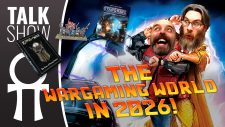






![Very Cool! Make Your Own Star Wars: Legion Imperial Agent & Officer | Review [7 Days Early Access]](https://images.beastsofwar.com/2025/12/Star-Wars-Imperial-Agent-_-Officer-coverimage-V3-225-127.jpg)




